- Home
- slideshows
- miscellaneous
- From mudslides to wildfires, these were some of the most devastating California disasters of 2018
From mudslides to wildfires, these were some of the most devastating California disasters of 2018
Lack of vegetation after 2017 fires led to deadly mudslides during a rainstorm in the town of Montecito.

A major rainstorm prompted a governor-proclaimed disaster in several counties.
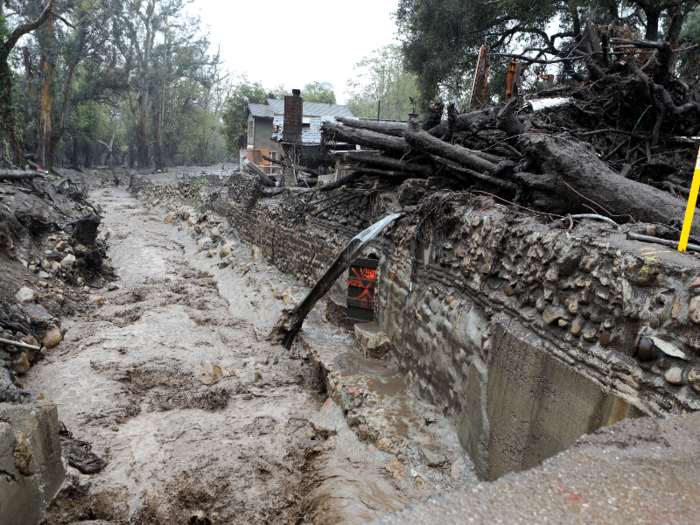
Beginning on March 20, just a few months after the deadly Santa Barbara County mudslides, an "atmospheric river event" swept through several California counties, prompting evacuation orders for more than 30,000 people, according to the Associated Press.
On April 19, Governor Jerry Brown declared a state of emergency for Amador, Fresno, Kern, Mariposa, Merced, Stanislaus, Tulare, and Tuolumne counties, saying that an "atmospheric river event caused dangerous flash flooding, erosion, and substantial mud and debris flows" as well as "power outages, damage to roads, downed trees, and power lines, flooding, erosion, and interruptions to San Francisco county’s water supply."
The Pawnee Fire burned over 15,000 acres in Lake County.

On June 23, a vegetation fire started on Pawnee Road and New Long Valley Road, northeast of Clearlake Oaks in Lake County. The wildfire burned for 16 days before it was officially 100% contained on July 9. According to the California Department of Forestry and Fire Protection, the Pawnee Fire burned 15,185 acres and destroyed 22 structures.
Governor Brown declared a state of emergency in Lake County on June 25. The cause of the fire is unknown.
San Diego County's West Fire destroyed 56 structures in just five days.
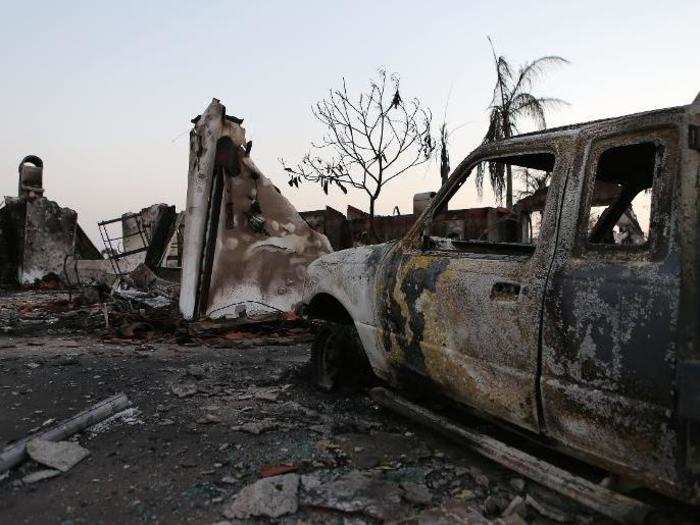
On July 6, a vegetation fire began in the Alpine community of San Diego County. It took firefighters five days to fully contain the fire, known as the West Fire. It burned 504 acres and destroyed 56 structures, according to the California Department of Forestry and Fire Protection.
Governor Brown proclaimed a state of emergency for San Diego County on July 6, granting "a Fire Management Assistant Grant to assist with the mitigation, management, and control of the West Fire."
Read More: 13 items you should have ready in an emergency kit in case of a wildfire
The cost to fight the Holiday Fire was estimated at $1.5 million.
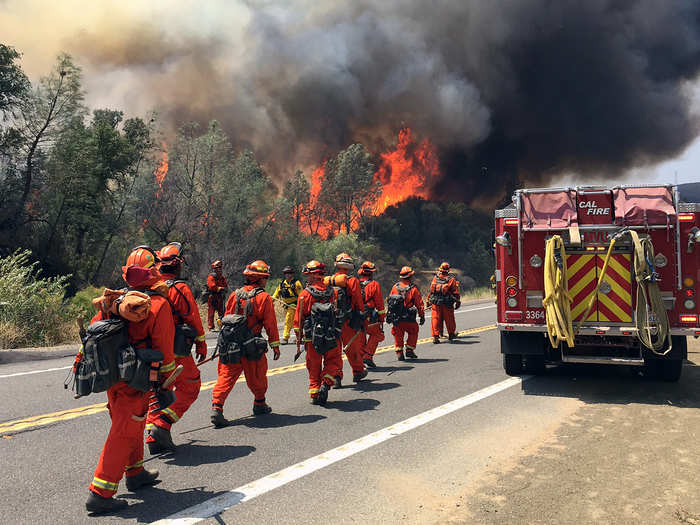
Also on July 6, a different fire started in the City of Goleta in Santa Barbara County. According to the California Department of Forestry and Fire Protection, firefighters fully contained the fire on July 11 after it burned 113 acres.
KEYT News Channel 3 reported that the Holiday Fire destroyed 10 single-family homes and 14 other non-residence buildings, estimating the cost to fight the fire at $1.5 million dollars.
Governor Brown delivered a proclamation declaring a state of emergency for Santa Barbara County on July 7, noting that the Holiday Fire "caused power outages, forced the closure of roadways, and continues to threaten critical infrastructure."
Monsoonal rain storms prompted a state of emergency in San Bernardino County.
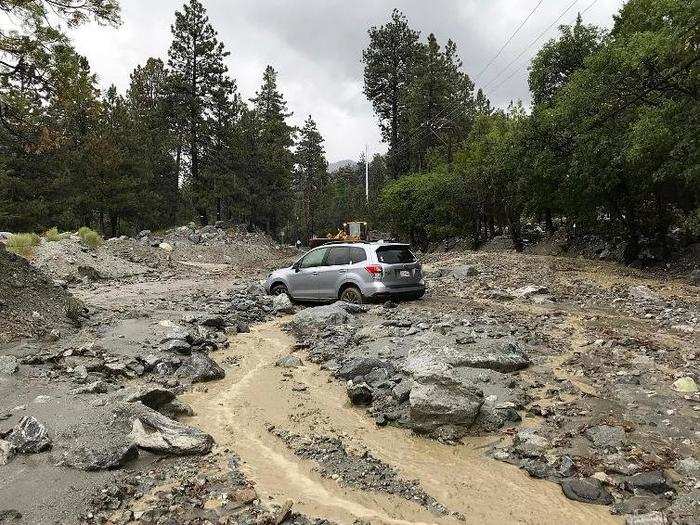
On July 7, monsoonal rainstorms in San Bernardino County caused "significant damage to roads," prompting Governor Brown to declare a state of emergency on July 24.
The declaration explained that "the circumstances of this storm, by reason of its magnitude, are or are likely to be beyond the control of the services, personnel, equipment, and facilities of any single local government and require the combined forces of a mutual aid region or regions to combat."
A complex of two fires became the biggest wildfire in California history up until that point.
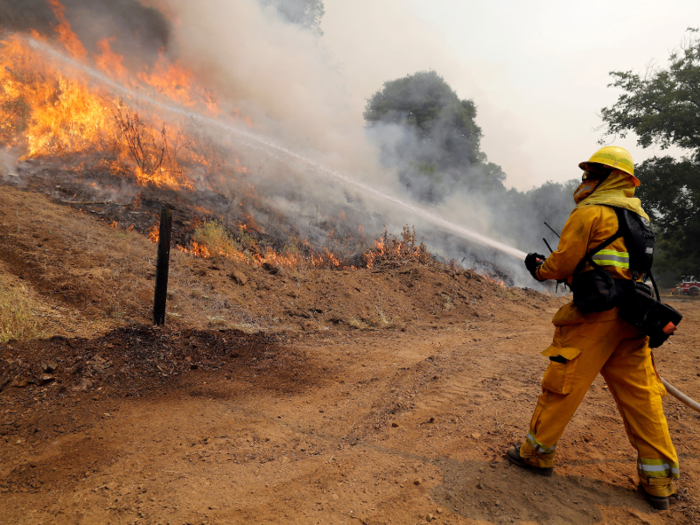
The Mendocino Fire Complex, which started on July 27, was composed of the Ranch and River Fires in Colusa, Glenn, Lake, and Mendocino Counties. The Sacramento Bee reported that the two fires combined burned 459,123 acres, destroyed 280 structures, and killed one firefighter.
Governor Brown declared a state of emergency in Lake, Mendocino and Napa counties on July 28 due to the Mendocino Fire Complex and the Steele Fire.
The Camp Fire was "the deadliest and most destructive wildfire in California history."
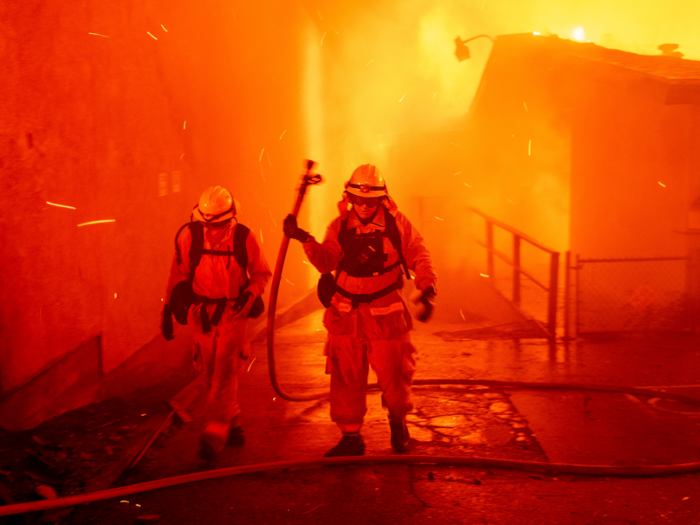
On November 8, a wildfire began at Pulga Road at Camp Creek Road near Jarbo Gap in Butte County, according to the California Department of Forestry and Fire Protection.
It was 100% contained on November 25, after burning over 153,000 acres, destroying nearly 14,000 homes and more than 4,800 other buildings, and killing about 85 people. There are still almost a dozen people who are unaccounted for. CNN called the Camp Fire "the deadliest and most destructive wildfire in California history."
Acting Governor Gavin Newsom declared a State of Emergency in Butte County on November 8. The cause of the fire is still under investigation.
The Woolsey Fire burned nearly 97,000 acres in Los Angeles and Ventura Counties.
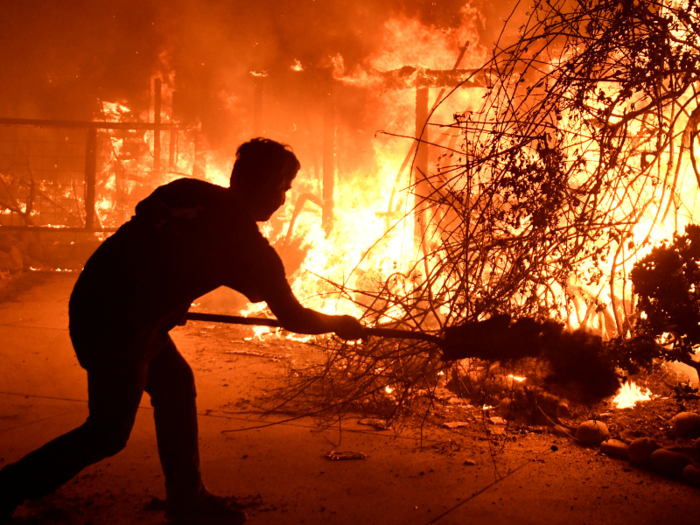
The Woolsey Fire began on November 8, just hours after the Camp Fire. The California Department of Forestry and Fire Protection noted that the Woolsey Fire burned 96,949 acres, destroyed 1,500 structures, and caused three fatalities before it was fully contained on November 22.
The next day, acting Governor Gavin Newsom declared a State of Emergency in Los Angeles and Ventura Counties. Officials are still investigating the cause of the Woolsey Fire.
In 2018, there were several other California fires that were determined to have non-natural causes.
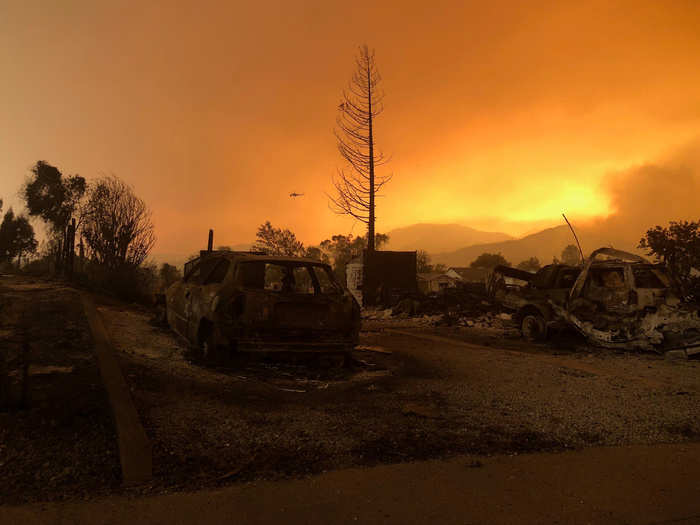
The Ferguson Fire, which started on July 13, burned 96,901 acres in Mariposa County. Fire investigators determined that it was believed to be caused by a vehicle's hot catalytic converter parked in dry grass, according to NBC News.
The Klamathon Fire, which started on July 23, killed one man, burned 38,008 acres and destroyed 82 structures in Siskiyou County. After an investigation, authorities arrested 32-year-old John Colin Eagle Skoda on multiple charges including arson and involuntary manslaughter. Investigators believe he caused the Klamathon Fire by recklessly burning debris, according to KDRV NewsWatch12.
The Carr Fire was also started on July 23. It burned 229,651 acres, destroyed 1,079 residences, 22 commercial structures, 503 outbuildings, and caused three firefighter fatalities in the Shasta and Trinity Counties. Investigators determined that the blaze was caused by sparks after a flat tire's rim scraped the asphalt, according to CNN.
The Cranston Fire, which started on July 25, burned 13,139 acres. Brandon N. McGlover of Temecula was charged with 15 felony counts for starting nine fires on July 25, including the one that became the Cranston Fire, according to the Los Angeles Times.
The Steele Fire, which started on July 28, burned 135 acres and destroyed eight structures in Napa County. Investigators determined that equipment use was the cause of the fire, according to SF Gate.
The Holy Fire, which started on August 6, burned 23,136 acres and destroyed 18 homes in Riverside and Orange Counties, according to The Press-Enterprise. The Orange County Register reported that police arrested 51-year-old Forrest Gordon Clark as a suspect.
- Read more:
- YouTube is teeming with conspiracy theories about the California wildfires. Here's what really may have caused the flames.
- A nurse drove through flames to help victims of the Camp Fire as his truck melted around him
- Stunning facts reveal how much more devastating wildfire season has become in California and throughout the US
Popular Right Now
Popular Keywords
Advertisement